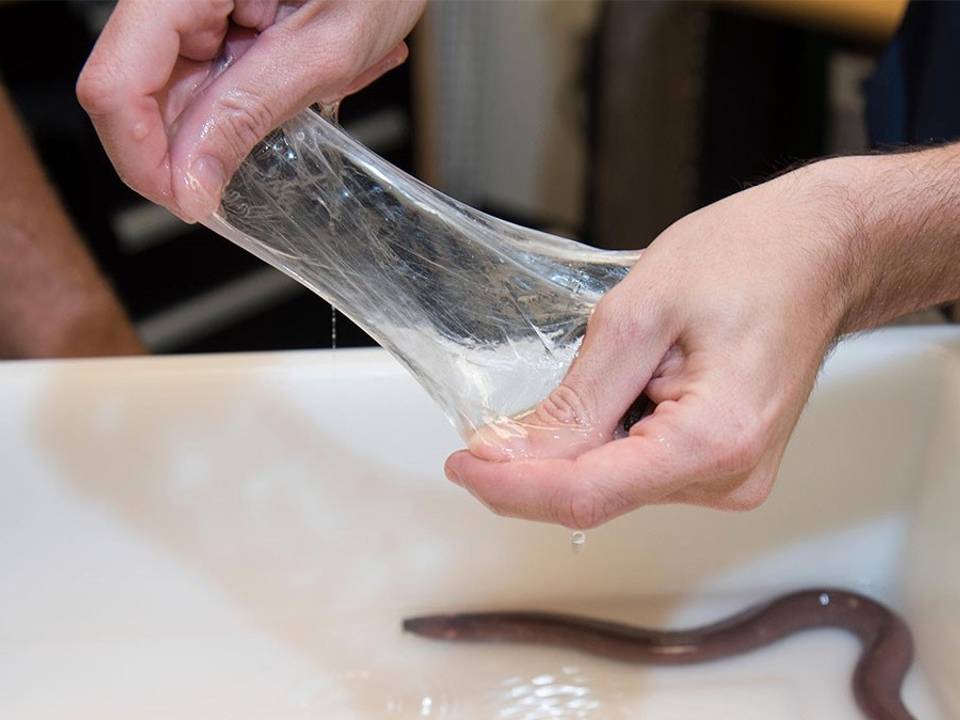Hagfish Intermediate Filament Protein Product in E. coli
USU faculty have developed a novel method for mass production of hagfish intermediate filament protein through heterologous expression using Escherichia coli. These proteins can then be further processed to produce strong and more ecofriendly polymers used for adhesives, coatings, and films.
Problem
Traditional bioplastic and synthetic polymers are getting increased world attention due to the negative impacts in regard to the pollution of such products. These products threaten entire ecosystems and species.
Solution
To eliminate these repercussions, various materials have been analyzed to replace these harmful substances. These alternative polymers can be expensive and low yielding. The process of heterologous expression of hagfish intermediate filament proteins using Escherichia coli allows for efficient and scalable mass production due to the high yield of the proteins. These proteins offer alternatives to traditional bioplastics and other synthetic polymers in a variety of forms including films, coatings, adhesives, fibers, gels and foams.
Benefits
The commercialization and implementation of this technology would greatly benefit the bioplastics and biopolymer market by reducing overall environmental impact. There are a plethora of applications for these proteins including adhesives, coatings, films, and other such products. The strength of this new proposed polymer would enhance everyday objects and would decrease the amount of waste in landfills. Because these polymers are derived from protein, they are significantly less toxic to the environment. Further, the mechanical properties of the materials created using these proteins could meet or surpass current petrochemically derived polymers. Costs of production is low as well due to the proteins being expressed at markedly high, and economically viable, levels using a a safe Escherichia coli strain that is harmless to humans.
Applications
Applications of this technology are varying. Due to the inherent versatility in this technology, with countless applications, this technology could be used in the medical field, in the bioplastics and polymer market, and is currently being researched and initially utilized in the United States Government. This technology can be used for creating fibers, used in adhesives, coatings, films, and other products where a polymer would be utilized.

Contact
Questions about this technology including licensing availability can be directed to:
Christian S. Iverson, MBA
Executive Director, Technology Transfer Services
(435) 797-9620 christian.iverson@usu.edu
USU ID C20007
Inventors
Justin A. Jones, Ph.D., Biology
Randolph V. Lewis, Ph.D., Biology
Dong Chen, Ph.D., Biology
Paula F. Oliveira, Ph.D., Biology
Thomas Ian Harris, Biology
Brianne E. Bell, Biology
Development Stage
TRL 5
Patent Status
Patent Applied For.

